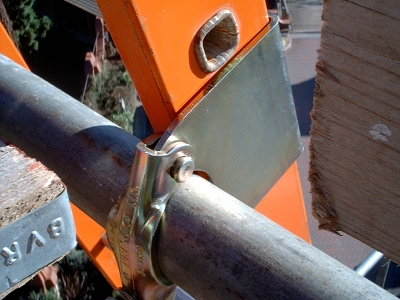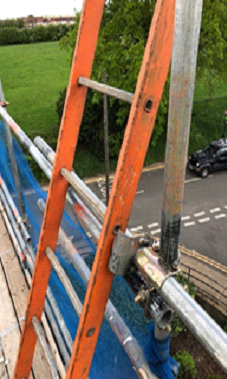A ladder provided as access to a scaffold lift must be fit for purpose and maintained to enable safe use. Time and time again our advisor are finding damaged, incorrectly fitted and poorly secured ladder access points on scaffold structures. Although used specifically for access the is equipment must meet the same criteria as one selected to work from.
A ladder should be securely tied at the top using bespoke ladder clamps or a suitable alternative such as rope. This is designed to hold the ladder in its set position and prevent it slipping from its mounting point. The method of fixing should be secure and not damage the structure or the ladder itself.
Ladders should be secured at the correct incline of 1 – 4 or 75° and secured at the base if necessary.
The ladder should extend at least 1m above the landing point to provide a secure handhold. A self-closing gate is recommended at the access point.
The ladder should have no visible defects. They should have a visual check each working day; as the ladder is part of a scaffold system it still has to be inspected every seven days as part of the scaffold inspection requirements; the ladder should meet the British Standard (BS) Class 1 ‘Industrial’ or BS EN 131 which are designed for use at work.
Whether it forms part of the 7 day statutory inspection of a scaffold or as a standalone ladder inspection, a detailed visual inspection must be conducted by a competent person. It is similar to ‘pre-use’ checks, in that it is used to spot defect but should be recorded. On scaffold structures, it forms part of the checklist criteria.
When completing an inspection, look for:
- twisted, bent or dented stiles;
- cracked, worn, bent or loose rungs;
- missing or damaged tie rods;
- cracked or damaged welded joints, loose rivets or damaged stays.
When damage is discovered, remove the equipment from use and arrange for repair or disposal.











